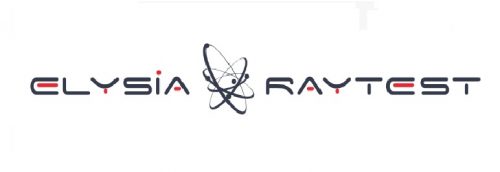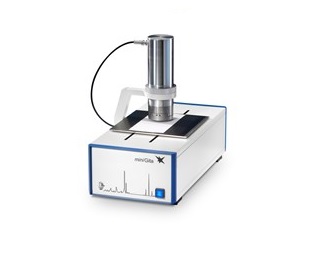

MiniGITA
MiniGITA* TLC is a scanning device, which moves a radioactivity detector along 1 trace from start to finish. The repeated, fast, continuous detection from start to finish and back compensates automatically for the radioactive decay of the compound over the scan length.
We provide different detectors and collimators to achieve the best performance according to the customer needs and application.
For ß-nuclides we use positron detector based on a small plastic scintillation probe. With this detector, the instrument can measure medium and high energy beta isotopes like 14[C], 90[Y], 18[F] 11[C] etc. The relative small size and fast respond time of the plastic scintillator allows to measure very high-count rates up to 500 000 cps and provides high sensitivity to positron emitters whilst significantly reducing background counts from non-positron emitting isotopes.
For low energy y-nuclides like 99m[Tc] the positron detector can also be used to measure high activity samples starting from 20 KBq up to 20 MBq.
For ɣ-nuclides, we propose a scintillation probe with a BGO crystal. Due to its density, BGO has quite high stopping power for radiation and a reasonable energy resolution. BGO is mechanically stable and non-hydroscopic. Relative small size and special shape enable a sophisticated design of the scintillation probe.
There are 5 mechanical collimators designed for the energy ranges of 0-60, 60-150, 150-250, 250-450, > 450 in keV. Depending on the radiation energy of the radioactive compound, the suitable collimator is inserted into the detector. Simple tools help to keep the distance exactly the same between the sample surface and detector entry window.
The miniGITA* offers a self-calibration and sensitivity check. Inserting a suitable reference standard and running the calibration program will result in production of a calibration test report.
After one scan, the TLC-plate can be moved manually to the following trace and the next TLC can be examined.
The chromatogram is displayed life on the screen of the connected PC. Peak integration and evaluation can be performed manually or automatically.
The measurement and data handing is digital (single event counting) and the limit of detection can be determined for every small peak.
